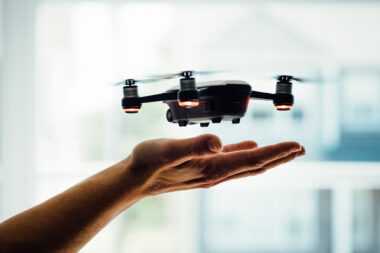Introduction
Cognitive load and attention monitoring systems are increasingly being integrated into adaptive interfaces, smart learning environments, and human performance assessment platforms. These systems are designed to measure mental effort and attentional focus in real-time, enabling optimization of task complexity, user interfaces, and feedback loops. Rooted in cognitive psychology and enabled by advanced sensor technologies and machine learning, this domain plays a critical role in human computer interaction (HCI), neuroergonomics, and affective computing.
What Is Cognitive Load and Why Monitor It?
Cognitive load refers to the amount of working memory resources required to perform a task. It is typically categorized into three types:
- Intrinsic Load: Complexity inherent to the content/task itself
- Extraneous Load: Load imposed by the way information is presented
- Germane Load: Load associated with the construction of schemas (learning effort)
Monitoring cognitive load and attention levels allows systems to:
- Dynamically adjust task difficulty
- Detect cognitive fatigue or disengagement
- Optimize training or learning content
- Prevent overload in high-risk environments (e.g., aviation, surgery)
3. System Architecture for Real-Time Monitoring
A standard Cognitive Load and Attention Monitoring System (CLAMS) includes the following components:
Sensor Layer
- EEG Headsets (e.g., dry-electrode): Measure brainwave activity across bands (theta, alpha, beta) to detect mental workload.
- Eye Trackers: Monitor gaze position, blink rate, and pupil dilation correlates of attention and load.
- ECG Sensors: Heart rate variability is linked to cognitive and emotional arousal.
- EDA/GSR Sensors: Skin conductance reflects sympathetic nervous system activity.
- Facial Expression Cameras: Detect micro expressions and fatigue via facial muscle patterns.
Data Acquisition and Preprocessing Layer
- Signal Filtering: Butterworth/Notch filters to remove noise from EEG/ECG signals.
- Artifact Removal: Independent Component Analysis (ICA) or adaptive thresholding to eliminate motion or blink artifacts.
- Feature Extraction:
- EEG: Power spectral density (PSD), band ratio (theta/alpha, beta/alpha)
- Eye: Fixation count, blink rate, saccade amplitude
- EDA: Phasic and tonic components
- HRV: RMSSD, LF/HF ratio
Inference and Decision-Making Layer
- Classification Models:
- SVM, Random Forest, k-NN for binary workload classification (high vs. low)
- Deep Learning (CNNs, LSTMs) for multimodal cognitive state prediction
- Regression Models: Predict cognitive load on a continuous scale
- Attention Estimation Algorithms:
- Kalman filters and time series modeling for gaze prediction
- Sequence based models (e.g., GRU, Bi-LSTM) for continuous engagement estimation
Application and Feedback Layer
- Adaptive content presentation in e-learning
- Real-time feedback in simulation training
- Workload balancing in mission critical systems
- Alert mechanisms for disengagement or overload
Core Technologies Involved
Cognitive load and attention monitoring systems leverage a suite of physiological sensors, signal processing methods, and intelligent algorithms to quantify mental states in real-time. These technologies are critical for developing adaptive interfaces, personalized learning environments, and high-performance operational systems.
1. Electroencephalography (EEG)
EEG measures the brain’s electrical activity via electrodes placed on the scalp. It is the most direct method of assessing cognitive states such as attention, fatigue, and mental workload.
Key Features:
- EEG Bands Monitored:
- Theta (4–7 Hz): Linked with working memory load and mental effort
- Alpha (8–12 Hz): Decreases during task engagement
- Beta (13–30 Hz): Increases with focused attention and cognitive arousal
- Gamma (>30 Hz): Associated with complex cognitive processing
Technologies:
- Dry-Electrode EEG Headsets: Wearable, wireless systems for mobile use (e.g., single-channel to 32-channel arrays)
- EEG Preprocessing Techniques:
- Bandpass filtering (1–40 Hz)
- Artifact removal (ICA, wavelet-based filtering)
- Spectral power analysis using Fast Fourier Transform (FFT)
Use:
- Real-time workload estimation
- Brain-computer interface (BCI) for adaptive interaction
2. Eye-Tracking Technology
Tracks eye movements, gaze direction, and pupil diameter to infer cognitive load and attention.
Key Features:
- Pupil Dilation: Increases with cognitive effort (measured in mm)
- Fixation Duration & Count: Longer fixations suggest deeper cognitive processing
- Saccadic Movements: Reveal scanning behavior and inattentiveness
Technologies:
- Infrared-based Eye Trackers: Use corneal reflection and pupil tracking
- Camera-Based Systems: Embedded in screens or glasses
- Key Metrics:
- Fixation Dispersion Index (FDI)
- Blink Rate and Blink Duration
- Scanpath complexity
3. Heart Rate Variability (HRV)
Derived from ECG or PPG signals, HRV provides insight into autonomic nervous system activity.
Key Features:
- Time Domain Metrics:
- RMSSD (Root Mean Square of Successive Differences)
- SDNN (Standard Deviation of NN Intervals)
- Frequency Domain Metrics:
- LF/HF ratio: Sympathetic vs parasympathetic balance
Technologies:
- Photoplethysmography (PPG) Sensors: Common in smartwatches, measure pulse rate
- ECG Sensors: Chest-worn electrodes for high-resolution HRV data
Use:
- Stress level estimation
- Fatigue and attention drift detection
4. Electrodermal Activity (EDA) / Galvanic Skin Response (GSR)
Measures skin conductance changes in response to stress and mental effort.
Key Features:
- Phasic Component: Short-term spikes linked to cognitive events
- Tonic Component: Baseline level of arousal
Technologies:
- GSR Electrodes: Worn on fingers or wrist
- EDA Analysis Software: Measures frequency and amplitude of skin conductance responses (SCRs)
5. Facial Expression and Microexpression Recognition
Camera-based systems use facial analysis to detect emotions and cognitive states.
Key Features:
- Eyebrow position, eyelid closure, lip corner pull
- Facial Action Units (AUs) based on the Facial Action Coding System (FACS)
Technologies:
- Infrared Depth Cameras (e.g., for 3D mapping of facial movement)
- ML Models: CNNs for emotion recognition from facial cues
6. Machine Learning and AI Algorithms
These transform physiological and behavioral data into cognitive load and attention metrics.
Key Algorithms:
- SVM, Random Forests: For binary classification of high/low cognitive load
- K-means, DBSCAN: For clustering attention profiles
- LSTM, GRU, Bi-RNNs: For sequential modeling of time-series physiological data
- CNNs: For gaze pattern and EEG spectrogram classification
- Attention Mechanisms & Transformers: For multimodal sensor fusion
Applications:
- Predicting cognitive overload in training environments
- Real-time feedback for adaptive learning systems
7. Multimodal Fusion Techniques
Integrates data from multiple sensors for holistic modeling.
Types:
- Early Fusion (Feature-Level): Combining EEG + Eye-Tracking + HRV features before model input
- Late Fusion (Decision-Level): Aggregating predictions from modality-specific models
- Hybrid Fusion: Uses neural attention models to weight inputs dynamically
Real-Time Cognitive Monitoring System Design
Cognitive monitoring systems are built using a closed-loop architecture that continuously senses, interprets, and responds to users’ cognitive states. The goal is to maintain optimal cognitive load avoiding both overload and underload for improved learning, decision making, and task performance.
1. Sensor Integration and Signal Acquisition Layer
This layer is responsible for collecting physiological and behavioral signals indicative of cognitive states.
Inputs:
- EEG signals (brainwaves)
- Eye-tracking data (gaze position, fixation, saccades)
- EDA/GSR (skin conductance)
- Heart rate & HRV (stress/attention)
- Facial expressions or body posture
System Components:
- Multi-sensor arrays embedded in:
- Wearables (e.g., EEG headbands, smartwatches)
- Head-mounted displays or AR/VR systems
- Desktop setups (with eye-trackers and webcams)
Real-Time Sampling:
- Sampling frequencies range from:
- EEG: 250–1,000 Hz
- Eye-tracking: 60–120 Hz
- HRV/GSR: 1–10 Hz
- Latency optimized using real-time operating systems (RTOS)
2. Signal Preprocessing and Feature Extraction Layer
Signals from sensors are noisy and require preprocessing before being fed into classifiers.
Techniques Used:
- EEG: Bandpass filtering (1–45 Hz), artifact removal (e.g., ICA), power spectral density (PSD) extraction
- EDA: Decomposition into tonic/phasic components
- HRV: Time-domain & frequency-domain measures (RMSSD, LF/HF ratio)
- Eye-tracking: Fixation density, saccade velocity, pupil diameter
Feature Types:
- Time-domain (e.g., mean HR)
- Frequency-domain (e.g., theta/beta EEG ratio)
- Statistical (e.g., standard deviation of pupil size)
- Spatial (e.g., heatmap dispersion in gaze data)
3. Cognitive State Estimation Layer (Machine Learning & AI)
This layer uses real-time features to classify or regress the user’s current cognitive state.
Algorithms:
- Classification Models:
- SVMs, Random Forests, XGBoost for high/low cognitive load
- CNNs for visual input or EEG spectrograms
- Regression Models:
- LSTM, Bi-RNN for time-series modeling of attention over time
- Attention-based Transformers for multimodal fusion and state estimation
- Hybrid Systems: Use ensemble learning or fusion techniques to combine multiple inputs
Output:
- Cognitive Load Index (0–1 scale or low/medium/high)
- Focus Score (% attention time)
- Fatigue Level, Distraction Index
4. Cognitive Feedback Loop and System Adaptation
Once the user’s mental state is inferred, the system uses this information to adapt and optimize user interaction in real-time.
Dynamic Adaptations:
- Task Complexity Modulation:
- If cognitive load is too high → Simplify task steps
- If load is too low → Increase challenge to avoid boredom
- Interface Adjustment:
- Enlarge or highlight key content
- Reduce distracting elements
- Modify layout or modality (e.g., switch from text to visuals)
- Timing and Feedback:
- Adaptive feedback delivery (e.g., delay when under stress)
- Smart pause or content replay if attention is low
Technologies Involved:
- Adaptive UI engines: React.js or Flutter-based interfaces that update layouts dynamically
- Real-Time Communication Protocols: MQTT, WebSocket to synchronize data flow
- Feedback Control Systems: Implement Proportional–Integral–Derivative (PID) or fuzzy logic control to stabilize user performance levels
5. Monitoring Dashboard and User Analytics
The back-end system tracks real-time and historical cognitive metrics to support optimization and personalization.
Features:
- Live cognitive state visualizations
- Session summary reports
- Cognitive trend predictions (using ARIMA or LSTM models)
- User clustering for profiling and personalization
Case Study: Real-Time Cognitive Load Monitoring in Adaptive Learning Environments
Background
A research based intelligent tutoring platform was developed to assess and respond to students’ cognitive load and attention in real-time during STEM-based e-learning modules (e.g., physics problem-solving). The system aimed to personalize content delivery and enhance learning outcomes by adapting task complexity based on the learner’s cognitive state.
System Setup
Participants:
50 high school students (age 16–18), monitored during 5 math and physics modules over two weeks.
Sensors Used:
- EEG headset (8-channel dry electrodes, sampling at 250 Hz)
- Eye-tracking device (120 Hz gaze tracker)
- HRV wristband (optical sensor with real-time pulse and variability monitoring)
- Webcam for facial emotion analysis and pupil dilation tracking
Core Components:
- Data Processing Unit: Edge-based inference using embedded GPU
- AI Framework: LSTM for load prediction; CNN + Transformer for gaze-emotion fusion
- Adaptive Engine: Real-time task scaffolding and content highlighting based on feedback
- Dashboard: Instructor-facing dashboard displaying live cognitive metrics
Implementation Methodology
| Step | Description |
|---|---|
| 1. Baseline Calibration | 5-minute resting state EEG and HRV readings established individualized baselines. |
| 2. Real-Time Monitoring | Cognitive load index was updated every 5 seconds using EEG (theta/beta ratio), HRV (LF/HF), and eye tracking data. |
| 3. Event Trigger System | Attention dips (e.g., off-screen gaze > 3 seconds) triggered automatic interventions such as hint prompts or visual cues. |
| 4. Adaptive Content Delivery | Problem difficulty adjusted dynamically increasing challenge when load was low, simplifying content when overload detected. |
| 5. Feedback Loop | System logged responses and success rates, refining its adaptation rules using reinforcement learning. |
Outcomes
| Metric | Traditional e-learning | With Cognitive Monitoring |
|---|---|---|
| Task Completion Rate | 82% | 96% |
| Average Accuracy | 68% | 85% |
| Off-Task Time | ~11 minutes/session | ~3.5 minutes/session |
| Student Engagement (self-reported) | Moderate | High |
| Cognitive Overload Events | 21 per session (avg) | 6 per session (avg) |
Key Observations
- Students with high baseline anxiety benefited most from attention-aware interventions.
- Real-time visual cues (e.g., highlighting formulas) based on gaze data improved comprehension in 72% of participants.
- Reinforcement learning refined task adaptation strategies over time, improving learning efficiency by ~25%.
Conclusion
The integration of cognitive and attentional monitoring into e-learning platforms significantly enhanced student engagement and performance. AI-driven, real-time personalization based on physiological signals proved effective in optimizing task complexity, reducing cognitive fatigue, and maintaining sustained focus.



